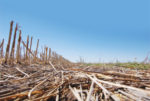Advertise Follow Us
Items Tagged with 'evaporation'
ARTICLES
Rotations, Double-Cropping Key Profitable No-Till Makeover
Oklahoma no-tiller Preston Simic is rejuvenating stagnant wheat ground by protecting it with residue, fixing fertility issues and diversifying crop rotations.
Read More






